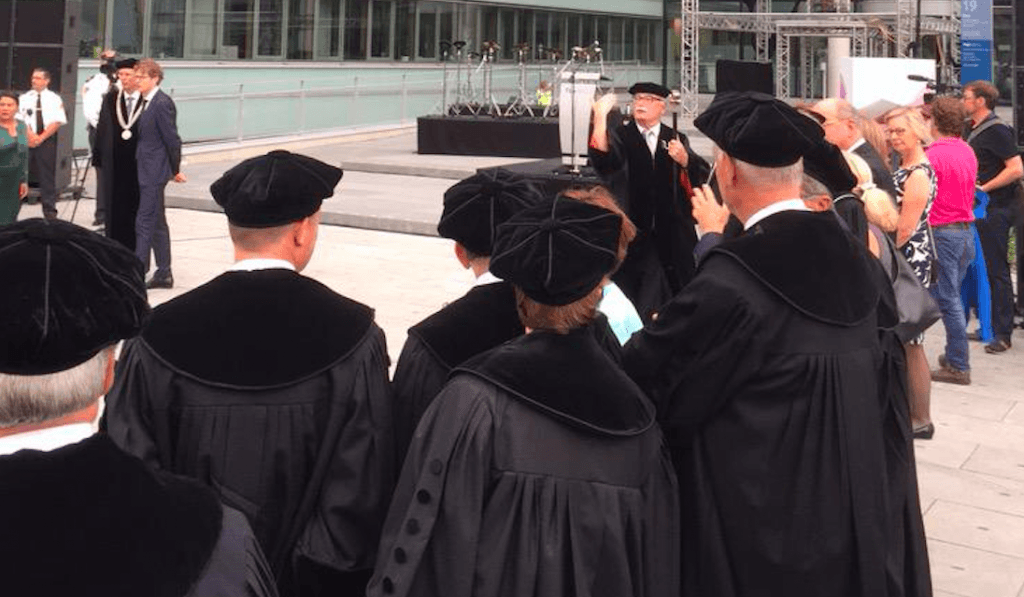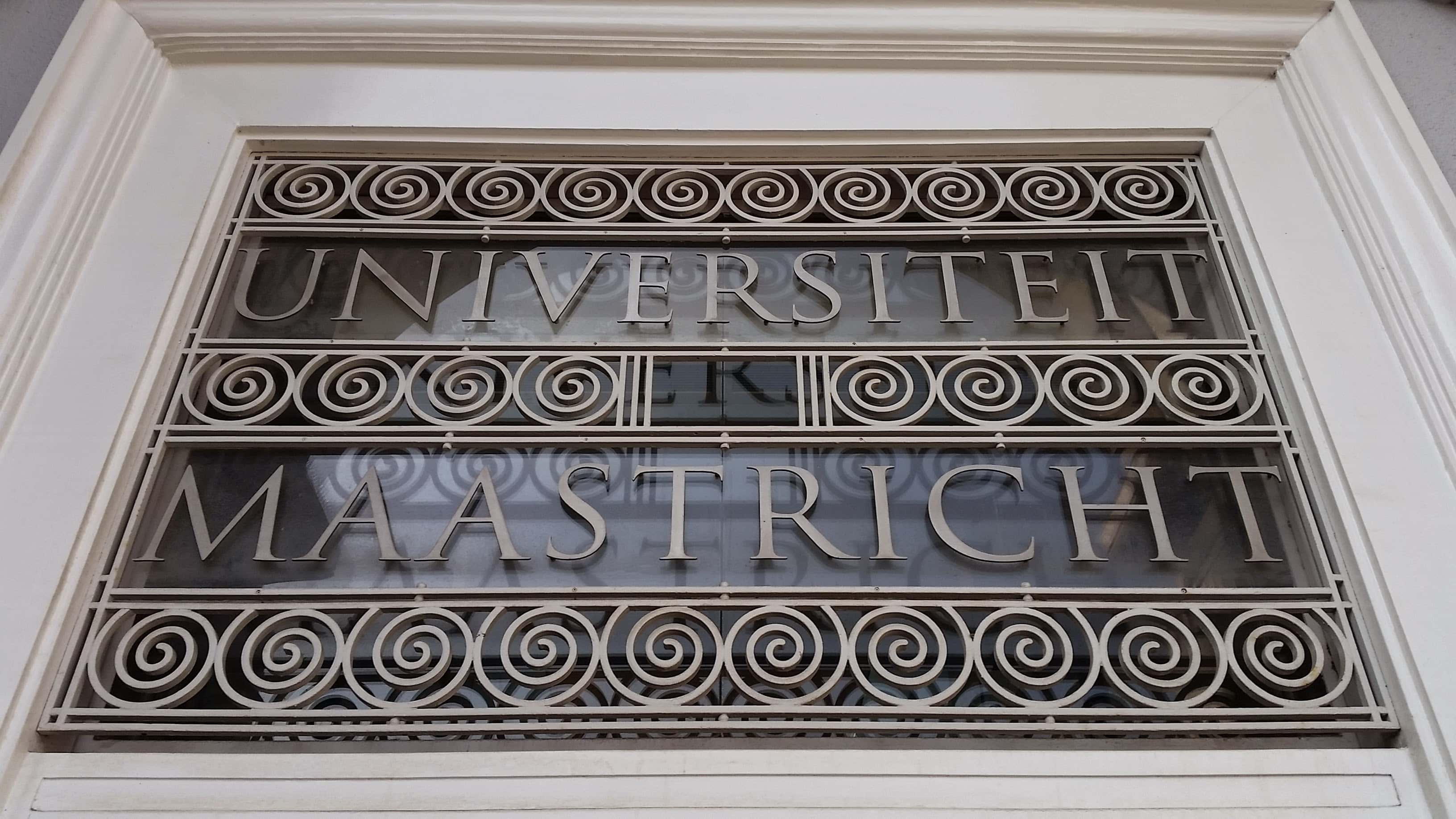
At the occasion of the opening of the new academic year at the Technical University of Eindhoven State Secretary Sander Dekker (VVD; media, education, culture and sciences) called upon scientists and students to look beyond the boundaries of their disciplines and to engage in more unexpected collaborations. “It was only when scientists joined forces with people and developments from outside, that they were able to make applications that were really innovative.” Here’s the complete speech by Sander Dekker, who also comprehensively digs into the technological history of the city of Eindhoven. It was originally published by Dekker’s ministry.
Ladies and gentlemen,
What an honor to open the Academic Year here in Eindhoven. I’ve been a guest at this University several times, but never for an occasion like this.
For first-year students, this is the kick-off of your student life. It is probably the first time that you’ll be living away from home. You couldn’t have chosen a better city than Eindhoven. For engineers, innovators and designers, this is sacred ground.
This is where the majority of Dutch technical history was written. This is where the researchers and tutors among you keep creating new history.
In the years ahead, they will teach you to do the same thing.
The results of Eindhoven’s successes can be found all over the world.
The chips that roll out of the ASML machines are not only placed in our smart phones, but in the phones of your Chinese and African colleagues as well.
The medical equipment designed here, has found its way all over the globe.
And it is down to the researchers here that, this City of Light was recently ranked as the smartest region and the most innovative city in the world.
In this place, innovation is second nature. Technology a booming business.
But that’s no guarantee that it will stay that way.
I’m stating the obvious when I tell you that technology is forging ahead.
You students probably can’t imagine that phones weren’t ever smart. That movies were recorded on tape. And that the only thing wireless, was the radio.
And it’s not just technology that is moving forward so rapidly. Companies are developing just as fast.
Airbnb, Uber and Snapchat are each estimated to be worth over 10 billion dollars. Five years ago, no one had heard of them.
And on the flip side, five years ago Nokia was still the global market leader in mobile phone sales. 10 million people in the Netherlands had a profile page on the internet forum Hyves.
Both companies were unable to keep pace with the innovation drive of their competitors. Nokia and Hyves both lost their position and now hang by a thread.
It illustrates something that I’d like to talk to you about today.
About what we need to stay innovative and competitive.
What we need to be excellent.
I’m going to take you to another era.
An era which laid the basis here in Eindhoven for this campus.
Let’s go back to the late nineteenth century. Eindhoven was a much smaller city than it is now. More of a big village actually. Population: four thousand.
But when production took off. Eindhoven grew just as fast in its slipstream.
From the start, the lighting factory undertook small-scale research. And after a few years, this began to take more serious forms.
The research took place in a fully equipped lab at a place called Strijp-S. As still happens in office environments, the name of the physics laboratory was soon shortened. It became known as NatLab. And while its name was cut in half, its field of research spread further.
The initiative for that expansion mainly came from outside the lab. During World War I, a hospital asked the Natlab to repair its X-ray lamps.
The Natlab engineers examined the lights, repaired them and then developed the technology further. Philips was thus the first to be able to detect tuberculosis with an X-ray machine. In the 1920s, that was as unique as it was lifesaving.
The innovations the Natlab created gave the company a huge boost. They were the fruits of a scientific tradition that attracted scientists to Eindhoven from all over the world.
The fruits of scientists who had a clear focus on research. Who were willing to investigate new ideas.
Long before a university was founded in this city, Philips already carried out groundbreaking research.
But as the years evolved, the Natlab’s role changed. Scientist started to focus more and more on creating new knowledge and less on the application of this knowledge.
Every now and then, the lab still produced high-quality products. Video 2000, for example. Or the video laser disk. Both offered a way to watch cinema-quality films at home. None of Philips competitors offered a better quality than they did. Yet neither was a success. The video recorder arrived when Sony’s Betamax and VHS already saturated the market. The video laser disk was developed without taking consumer wishes into account. They wanted a device that enabled them to record films too, which the laserdisc couldn’t.
The player was hardly sold.
These setbacks came at a bad time for the company. In the 1980’s, the world was in the midst of an economic crisis. Low-wage countries were emerging. Unemployment soaring. Philips too was suffering. Unable to deal with the competition. A major re-organization was imminent.
It was at that time that a couple of inventive engineers from product development contacted their colleagues at Strijp S. This was highly unusual. Strijp S was known as ‘The forbidden city’. You couldn’t just walk in. And this barrier between the Natlab and factories wasn’t just physical. The scientists at the Natlab and the engineers who made the products were worlds apart. Both worked on their own islands.
But now the product developers needed their colleagues badly. They wanted to record sound in a new way – optically. However this was extremely complex. They needed help.
For the production of the CD, it took specialists from different disciplines. Eventually, knowledge was required about
optical recording,
signal processing,
laser technology
and precision mechanics.
But that wasn’t enough. Philips eventually joined forces with its biggest competitor – Sony. Together they turned their idea into a successful product. Some of you were there, some of weren’t even born yet, but the CD became extremely popular. After years of falling sales, Philips was on a roll again
The failures of Video2000 and the Video Laser Disk, and the success of the CD teaches us an important lesson.
When scientists and engineers stayed on their own island setbacks occurred
It was only when scientists joined forces with people and developments from outside, that they were able to make applications that were really innovative. Their work crossed boundaries. And they created products that may even have saved the future of the company.
To me, it is very simple. New applications only have value when they are used. And I believe, that the best applications are fruits from collaboration between unexpected partners.
It’s what Tesla Motors shows as well. The electric car manufacturer works alongside Panasonic, Daimler and Dalhousie University in Canada. Last year the company’s market value grew by more than six hundred percent to thirty one billion dollars.
But it’s not only big companies that benefit from collaboration. The Dutch app-developer Frederik van den Broek was diagnosed with brain cancer. And he discovered his illness was literally a brain teaser. Remembering when he needed to take his pills and what to eat with those pills became a difficult day-time job.
In collaboration with Microsoft and Amsterdam’s Free University hospital he developed Mindapp. This app helps patient to keep up with their treatment. The app also gives doctors tools to check easily how the patient has been doing between check-ups. Everyone involved developing Mindapp, benefits.
Mindapp, the Natlab and Tesla Motors show that innovation and excellence can’t exist in splendid isolation. That real progress only happens when people look beyond the boundaries of their own discipline. When they share their own knowledge and skills with other people.
Other universities.
Other companies.
And perhaps even with their biggest competitors.
It is a tradition which this university seamlessly blends into. You realize that the challenges you are embarking on are so difficult and complex that you need other people.
And as a student, you’ll learn the same thing. With the introduction of the broad bachelor, you learn to link disciplines. This enables you to seek out the areas between the disciplines for yourselves. To integrate design with technology.
I’m sure I don’t need to convince all of you here today about the importance of cooperation. Your Rector has just explained that this University sets up two institutes with Utrecht University.
And you intend to work with Wageningen University. Besides that you work with more companies than any other university in the Netherlands. Not only do you reap the benefits, so do they.
You are unique in this respect. And you deserve your top position.
But I believe that the Netherlands will only retain its top position in science if we invest more in partnerships.
For many scientists, it is a big step to move outside the boundaries of their disciplines. Traditionally, researchers tend to focus on the development of knowledge within their own discipline.
They visit conferences regarding their own specialization.
At universities, they share offices with their direct colleagues.
And they publish in journals carrying the name of their field of expertise.
Now let me be clear, our scientists are very good at that. Virtually no other country in the world does it better. If you see how often Dutch publications are quoted, then we are among the top in the world.
But strangely, we are not half as good where innovation is concerned. In European Union innovation rankings, the Netherlands is not even near the group of leaders in innovation. Instead, we are among the group of innovative followers. And even in that group, we are not excellent – but just average. It shows that scientists aren’t always concerned with the application of their knowledge.
In general, I feel that the scientific world is still too often looking inward. That there is too much emphasis on publishing in leading journals, instead of creating new innovations.
Of course: writing scientific articles is key to your work. But often these are published in very specialized journals. For and by fellow experts. Usually in a language which is difficult for other people to understand. In fact even for colleagues at the other end of the corridor. When real innovation takes place at the interface of different disciplines, those disciplines must be able to understand each other.
And then the articles which you publish must be accessible. To everyone.
If teachers, doctors or start-ups want to use scientific knowledge, they come up against paywalls. Knowledge produced with public money is simply not available to that same public.
And that is an obstacle to partnerships.
To excellence.
And ultimately to innovation.
I do everything I can to make sure scientific publications become open access in the future. Because if we want to be excellent as a country and apply new knowledge, we must ensure that such knowledge is freely available.
And we must ensure that we can match the competitors in other countries. By allowing scientists not only to publish their knowledge but also to give meaning to that knowledge alongside others.
In order to help our scientists in forming partnerships, Minister Bussemaker and I want to draw up the National Science agenda. And we have leading figures from industry and science to help us with that.
In the National Science agenda, we decide the areas in which our knowledge can have most impact. The areas in which science can make the biggest contribution to our progress. And which problems are so complex that scientists must work together with the industry to face them.
Ladies and gentlemen,
I have just mentioned that there was a time when Strijp-S was also called The Forbidden city. Only chosen scientists from Philips could go in and out of the Natlab.
Here at the new location of the Natlab, many different organizations move in and out. Big companies, small start-ups, science and education seamlessly merge here.
I want to see these movements not just here, but in every knowledge institution.
So I am making an appeal. To the students here in the hall and to the scientists outside.
Take the scientists and researchers from this city of light as a shining example.
Work with other disciplines,
collaborate with businesses
and form partnerships with social organizations.
Don’t focus solely on scientific breakthroughs,
but break through the walls of your forbidden city’s as well.
And by doing that, you give Dutch knowledge maximum impact.
You let science make real progress.
And you’ll take the only road, to excellent innovations.
Thank you.







